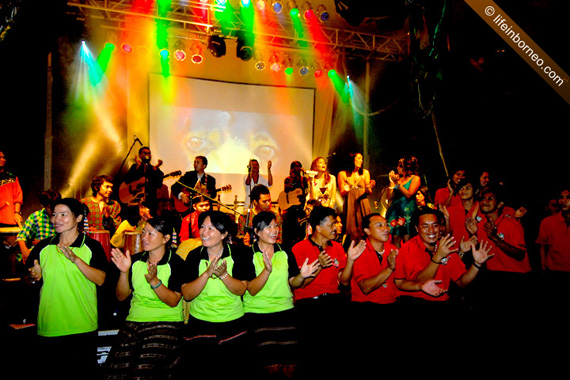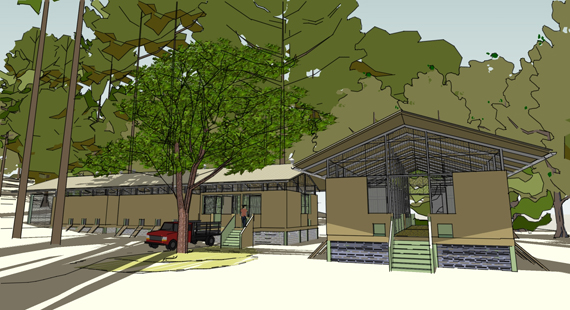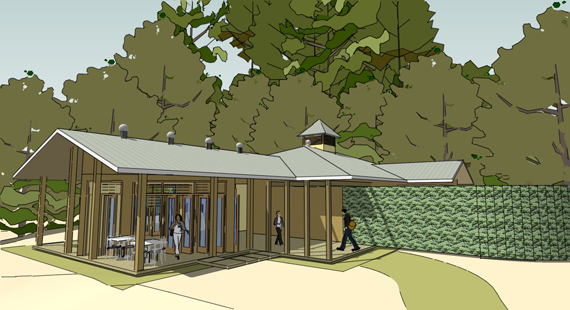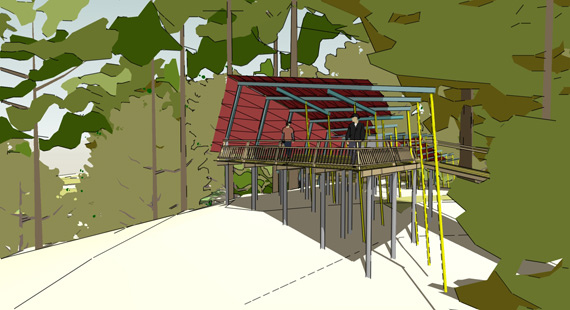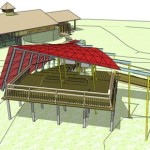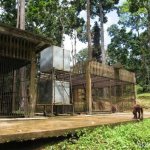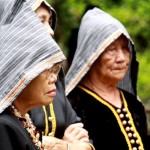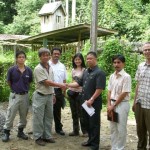Sun Bear Conservation Centre gets some Cash!
Our proposal for a Sun Bear Conservation Centre in Borneo has moved closer to reality thanks to an extravagant Fundraising Dinner held in Kota Kinabalu in November.
The event which was organised by our partner LEAP succeeded in raising over half a million ringgit. This money was then matched one-to-one by the State Government to give us a total which we hope will be enough to build Phase One.
The first priority is to enclose 1 hectare of the Sepilok Forest Reserve with electric fences. This will allow a controlled release of bears into their natural habitat.
All of the bears currently held at Sepilok have been confiscated by the Sabah Wildlife Department, usually from the pet trade or mini-zoos. These bears have become habituated to humans so if we just let them loose again in the forest they will either not have the skills to survive, or would make a nuisance of themselves and end up back where they started, or worse.
Phase One will provide the means to look after the welfare of up to 27 bears, for the rest of their lives if necessary. The capacity is limited by the number of night time dens and the number of forest enclosures.
A new bear house is to be built with denning for 20 bears plus food preparation, staff areas and a training pen. The training pen is used to teach the bears about electric fences! Meanwhile the existing bear house will be converted to be used for quarantine, treatment and birthing and then later extended to house a visitor centre
In design terms the biggest challenge is facilitating the movement of bears and making life easy and safe for both the bears and their keepers. Imagine the logistics of releasing 20 bears each morning into the correct forest enclosure and then getting them all back in again at night!
In the wild, sun bears live at very low densities and are generally solitary. In captivity they can become quite sociable but there is a risk that mixing the wrong bears could result in a brutal fight.
Making the building sustainable is of course high on our agenda. The bear house will use a lot of energy in operation and will embody plenty more in the construction materials.
We can mitigate the latter to a certain extent by using pre-cast concrete floors and lightweight block walls, but are constrained by the need to use concrete to raise the dens above flood level and to provide a surface that can stand the daily wash-down.
The access corridor between the dens will be floored with bio-composite boards which are made from recycled HDPE plastic mixed with a natural fiber – in this case rice husks.
To make the buildings comfortable for both bears and keepers we use large areas of natural ventilation plus a bituminous fibre roof sheeting which does not transfer heat as well as steel and also has the benefit of deadening the drumming of rain, which can be uncomfortable in a tropical deluge.
Luckily the site allows us to orient the building East-West which helps to minimise solar gain in the concrete structure.
As the centre will use large volumes of water for cleaning we will put in as many rainwater tanks as we can afford and link them together with electric pumps. These pumps together with the electric fences and a large fridge will be the biggest energy consumer in operation. Given the high cost of on-site power generation I don’t think we can do much about this at present
Greywater from washing down the cages will be treated in a septic tank and reed bed filter before being recycled. Solid waste will be scooped up daily from the dens and fed to a bio-digester from which we plan to capture methane to be used to cook the bear’s food. The staff toilet and any food scraps will also feed the digester.
Completion of Phase One is expected in late 2009. Meanwhile we will continue to raise funds for Phase Two. This will help the case for economic sustainability by offering a visitor centre, observation gallery and environmental education program. On completion of both phases the centre will complement the nearby Sepilok Orang-utan Centre and Rainforest Discovery Centre thus strengthening Sepilok’s reputation as a hub for environmental education and nature tourism.
Related posts

